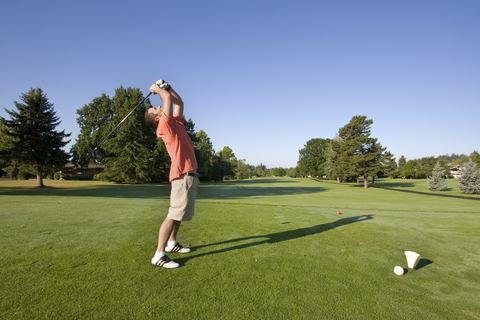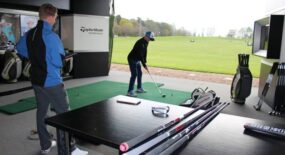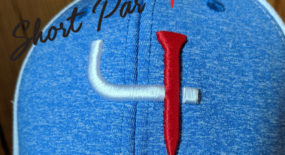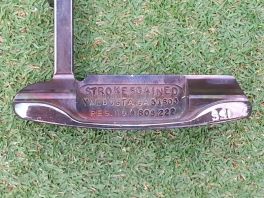Golf Swing Gone Bad

“Sometimes It Has to Get Worse Before It Can Get Better”
The pro that I learned from used to say this a fair amount while working on his own swing, which was not particularly comforting when I too was trying to improve my own game. Worse still is when you feel like you are making progress but then suddenly it all goes to hell in the middle of a round. All too often, many players find themselves in the position where things are not going at all to plan, but are at a loss as to the root of the problem.
For example, today, I couldn’t hit the broad side of a barn… well, actually, that might have been all I hit (that and a few ponds and creeks). What was more frustrating for me was that just 24 hours earlier I shot in the mid 70’s (my usual handicap). Still, I guess there were warning signs – for the past few weeks I have been losing power and starting to pull my drives.
The Diagnosis: Not enough shoulder coil and mis-alignment
Two things every golfer must do are 1) coil their lead shoulder behind the ball and 2) be properly aligned to the target. When you do not make a good coil of your body to get your lead shoulder back under your chin, you lose power. Secondly, from an alignment standpoint, most amateurs are too closed at address. I covered this issue in detail in my Golf’s Great Illusion post. It’s very easy to be too closed at address which gives you no choice but to swing across yourself, for the above-mentioned pull, rather than down the target line.
The Remedy
Sometimes you need to step back and attack the issue from a different angle in order to get ‘unstuck.’ Having access to a video of your swing can be an invaluable way to see flaws in your setup and swing. If you are on your own on the range, another way to get “unstuck” is to start with simple half and three quarter shots, to better feel how the club face is behaving through impact. The ball doesn’t lie, and it’s flight can help you discern between what you feel you are doing, and what you are actually doing. Another exercise is to make half or three-quarter swings, and try to work the ball. The below video is a good illustration of how Jimmy Ballard teaches how to hit a draw.
Fundamentally, the Ballard swing is a swing that produces a very square club face at impact, and that’s what makes hitting straight shots so easy. Key to this is to stand tall and align yourself properly. For me, it was helpful to make a slightly exaggerated swing from the inside, where I let the toe turn over a little through impact, to provide a slight draw. Then I would come back and hit fades, by aligning myself the other way, where I was swinging slightly more steeply and a bit across the line. Finally, I could setup normally, and feel the club travel down the target line, and release properly. While the tendency is to hit full swings, I find it more useful to only hit half and three-quarter shots to simply focus on where the club face was travelling through impact, and it was very easy from there to start hitting full shots again.
As any golfer knows, rounds don’t always work out as planned, and I am sure my next round will be an adventure but that’s why we play the game, I suppose. So the next time you get in a slump remember: ‘sometimes it has to get worse before it can get better’.























Nice Post,
For the draw I also like to pay attention to the finish of the golf swing. For me I make sure that the right arm finishes on top of the left arm at the follow through. This ensures I have properly released the golf club.
Cheers
The 3/4 swing does help me get back on track so I can do better at a pro-am with the likes of Wie and Gulbis watching…